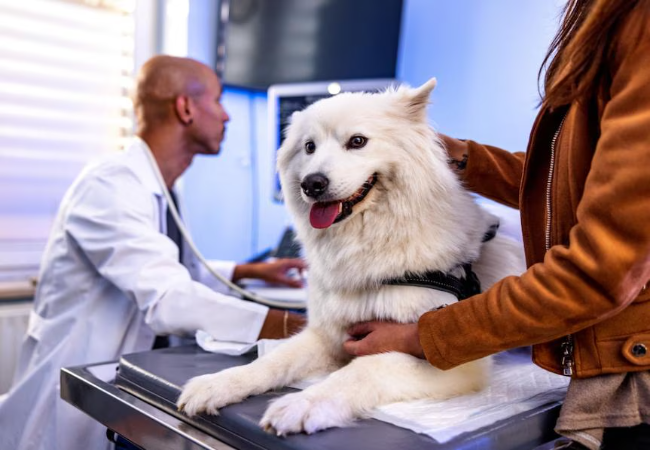Mitral Valve Disease in Dogs: A Vet’s Guide to Signs, Stages & Care (2025) 🐾❤️

In this article
Mitral Valve Disease in Dogs: A Vet’s Guide to Signs, Stages & Care (2025) 🐾❤️
By Dr. Duncan Houston BVSc
Hello—I’m Dr Duncan Houston BVSc, veterinarian and Ask A Vet founder. Mitral Valve Disease (also known as myxomatous mitral valve degeneration, MVD) is the most common heart valve disease in dogs—especially small breeds like Cavaliers, Dachshunds, and Pomeranians. Detected by a murmur, MVD can vary from harmless to life-limiting. This vet‑approved guide aims to:
- Explain what MVD is and why it develops
- Detail common signs and health risks
- Break down staging from early to advanced
- Cover diagnostics, medications, and interventions
- Offer lifestyle and monitoring advice for life with MVD
1. What Is Mitral Valve Disease?
MVD occurs when the mitral valve’s leaflets and supporting structures degenerate. It becomes thickened and floppy, allowing blood to leak backward (regurgitation) into the left atrium. The heart compensates by remodeling—thickening or enlarging—and over time this may lead to congestive heart failure.
2. Who Gets Affected?
- Small, older breeds are most affected—Cavalier King Charles Spaniels, Toy/Silver Poodles, Chihuahuas, Dachshunds, Pomeranians, Yorkies.
- Prevalence: ~85% of small-breed dogs have MVD by 13 years old; murmur often detected between 6–10 years.
- Genetic component: A strong inherited risk—especially in Cavaliers, where it’s leading cause of death.
3. Signs & Symptoms
- 🫀 Heart murmur: often the first sign on routine exam.
- 😮💨 Coughing, especially at night or during rest.
- 🚶 Exercise intolerance, fatigue, or weakness.
- 💨 Rapid or labored breathing, increased resting respiratory rate (>35 breaths/min).
- 😴 Collapse or fainting in advanced cases.
4. Staging MVD (ACVIM Guidelines)
- Stage A: At-risk breeds, no murmur yet.
- Stage B1: Murmur present, no enlargement—monitor only.
- Stage B2: Murmur + heart enlargement—start pimobendan & lifestyle support.
- Stage C: Signs of CHF (pulmonary edema); begin diuretics, ACE inhibitors, pimobendan.
- Stage D: CHF refractory to standard meds—intensive therapy and hospitalization required.
5. Diagnostics
- Physical exam: murmur grade, lung auscultation.
- Chest X‑rays: assess heart size, pulmonary edema.
- Blood tests: NT-proBNP for heart strain, plus general labs.
- Echocardiogram: gold standard to evaluate valve leak and heart function.
- ECG & blood pressure: detect arrhythmias, hypertension.
6. Treatment Options
6.1 Monitoring (Stage A–B1)
- Re-check murmur and heart size every 6–12 months.
- Home: monitor resting respiratory rate, activity.
6.2 Medications (Stage B2–D)
- Pimobendan: improves heart function and delays CHF onset—essential in B2+.
- Diuretics: furosemide (± spironolactone) reduce lung fluid in CHF.
- ACE‑inhibitors: (enalapril, benazepril) protect the heart & kidneys.
6.3 Advanced Support
- Hospital care: supplemental oxygen, IV diuretics for acute CHF.
- Arrhythmia management: antiarrhythmic drugs if needed.
- Surgery: rarely available—mitral valve repair is emerging but currently uncommon.
7. Lifestyle & Home Care
- Regular controlled exercise, adjusted to tolerance.
- Low‑sodium diet may benefit some CHF dogs.
- Weight control to reduce cardiac load.
- Stress avoidance—minimize excitement and overheating.
- Monitor breathing & activity daily—track changes.
8. Prognosis & Life Expectancy
- Early stages (A–B2): excellent—many dogs live years before CHF.
- Once CHF occurs: median survival ~6–18 months with treatment in small to medium breeds; larger breeds may progress faster.
- Prognosis depends on: stage, response to meds, arrhythmias, pulmonary pressure, concurrent illnesses.
📌 Final Thoughts from a Vet
Mitral Valve Disease is a lifelong condition—but early detection, appropriate staging, and proactive management allow many dogs to thrive. Regular monitoring, prompt treatment, and lifestyle adjustments are key. With veterinary support and tools like Ask A Vet, you can optimize your dog’s quality of life through every stage. 🐶❤️






